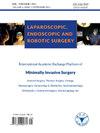Fully endoscopic microvascular decompression for trigeminal neuralgia: A retrospective study
Q3 Medicine
引用次数: 0
Abstract
Objective
Microvascular decompression (MVD) is the gold standard for treating drug-resistant classic trigeminal neuralgia (dcTN), with endoscopy enhancing surgical precision through improved visualization. This study evaluates the efficacy of fully endoscopic MVD for dcTN and presents our early experience.
Methods
This retrospective study included patients with dcTN who underwent fully endoscopic MVD in the Department of Neurosurgery, the First Affiliated Hospital, Zhejiang University School of Medicine from November 2020 to February 2023. We recorded basic patient clinical information, clinical outcomes, offending vessels, complications, and recurrences, and assessed outcomes via the Barrow Neurological Institute (BNI) pain intensity score and the numeric rating scale (NRS) score.
Results
All 42 patients had dcTN with preoperative BNI scores of V and NRS scores of 8–10. Endoscopic visualization enabled the precise identification of neurovascular conflicts, including small and deeply located vessels. Immediately after surgery, 90.5% of patients achieved complete pain relief (BNI score of I, NRS score of 0). At the final follow-up, 85.7% of patients had complete pain relief. All patients’ pain was significantly relieved at immediate after surgery (0 vs. 9, p < 0.001) and at the final follow-up (0 vs. 9, p < 0.001), with lower NRS scores. Complications, including vertigo, headache, and transient facial numbness, occurred in 14.4% of patients and were manageable.
Conclusion
Fully endoscopic MVD is a safe and effective treatment for dcTN.
三叉神经痛的全内窥镜微血管减压术:回顾性研究
目的微血管减压术(MVD)是治疗耐药经典三叉神经痛(dcTN)的金标准,内镜下微血管减压术(MVD)可提高手术精度。本研究评估了内窥镜下MVD治疗dcTN的疗效,并介绍了我们的早期经验。方法回顾性研究于2020年11月至2023年2月在浙江大学医学院第一附属医院神经外科行全内镜下MVD的dcTN患者。我们记录了患者的基本临床信息、临床结果、侵犯血管、并发症和复发情况,并通过巴罗神经学研究所(BNI)疼痛强度评分和数字评定量表(NRS)评分对结果进行评估。结果42例患者均为dcTN,术前BNI评分为V, NRS评分为8 ~ 10分。内镜可视化能够精确识别神经血管冲突,包括小血管和深部血管。术后即刻,90.5%的患者疼痛完全缓解(BNI评分为1分,NRS评分为0分),终期随访时,85.7%的患者疼痛完全缓解。所有患者术后即刻疼痛均明显缓解(0比9,p <;0.001)和最终随访时(0 vs. 9, p <;0.001), NRS评分较低。14.4%的患者出现眩晕、头痛和短暂性面部麻木等并发症,这些并发症是可控的。结论内镜下MVD是一种安全有效的治疗dcTN的方法。
本文章由计算机程序翻译,如有差异,请以英文原文为准。
求助全文
约1分钟内获得全文
求助全文
来源期刊

Laparoscopic Endoscopic and Robotic Surgery
minimally invasive surgery-
CiteScore
1.40
自引率
0.00%
发文量
32
期刊介绍:
Laparoscopic, Endoscopic and Robotic Surgery aims to provide an academic exchange platform for minimally invasive surgery at an international level. We seek out and publish the excellent original articles, reviews and editorials as well as exciting new techniques to promote the academic development.
Topics of interests include, but are not limited to:
▪ Minimally invasive clinical research mainly in General Surgery, Thoracic Surgery, Urology, Neurosurgery, Gynecology & Obstetrics, Gastroenterology, Orthopedics, Colorectal Surgery, Otolaryngology, etc.;
▪ Basic research in minimally invasive surgery;
▪ Research of techniques and equipments in minimally invasive surgery, and application of laparoscopy, endoscopy, robot and medical imaging;
▪ Development of medical education in minimally invasive surgery.
 求助内容:
求助内容: 应助结果提醒方式:
应助结果提醒方式:


